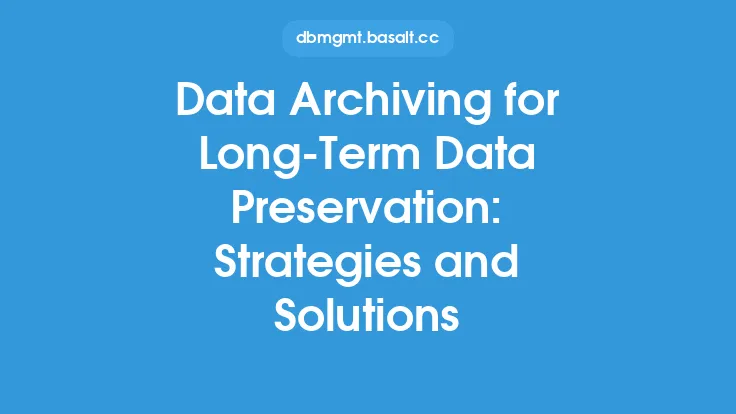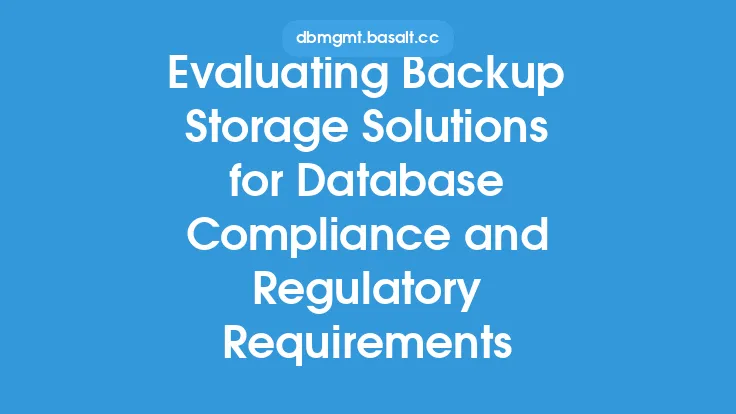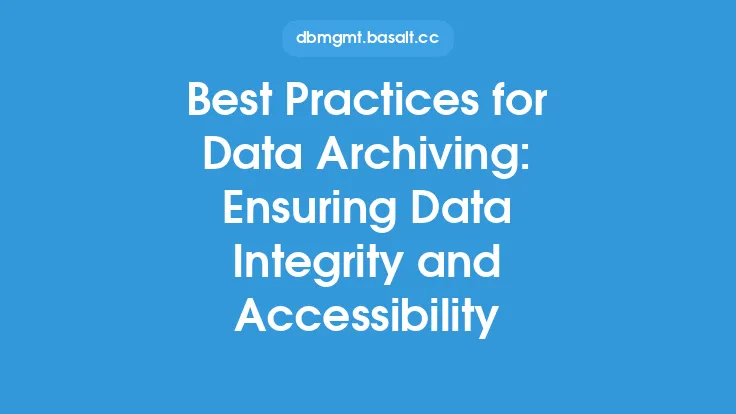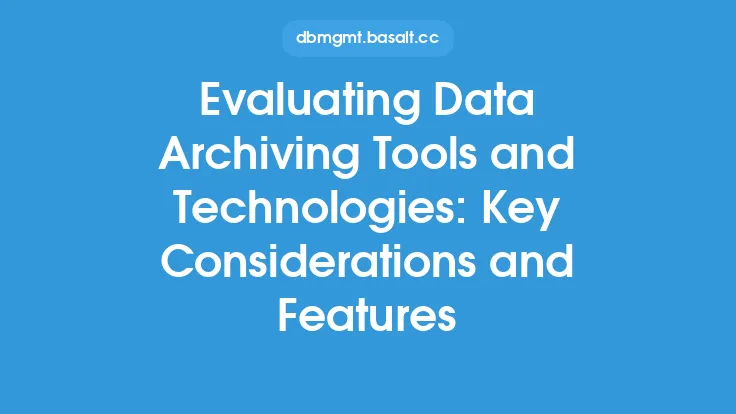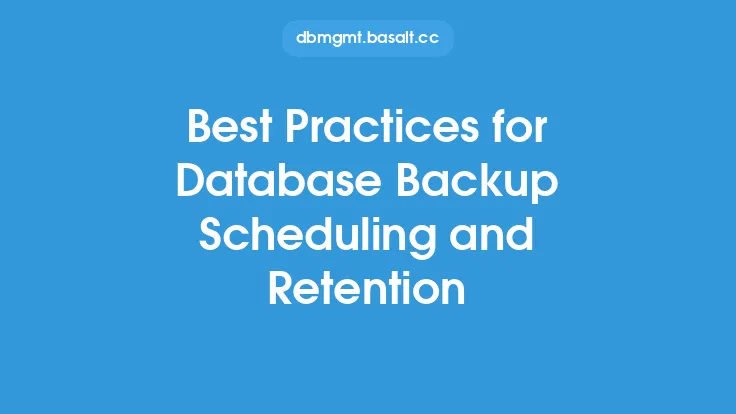As organizations continue to generate and collect vast amounts of data, the need for effective data archiving and retention strategies has become increasingly important. Data archiving refers to the process of moving inactive data to a separate storage system for long-term preservation and retention, while data retention refers to the policies and procedures governing how long data is kept. Balancing storage needs with regulatory requirements is a critical challenge that organizations must address to ensure compliance, reduce costs, and maintain data accessibility.
Introduction to Data Archiving and Retention
Data archiving and retention are essential components of a comprehensive data management strategy. Data archiving involves transferring data from primary storage systems to secondary storage systems, such as tape, disk, or cloud-based storage, to free up space and reduce storage costs. Data retention, on the other hand, involves establishing policies and procedures for managing data throughout its lifecycle, from creation to disposal. Effective data archiving and retention strategies enable organizations to meet regulatory requirements, reduce the risk of data loss, and improve data accessibility.
Regulatory Requirements for Data Archiving and Retention
Regulatory requirements for data archiving and retention vary by industry and jurisdiction. For example, the General Data Protection Regulation (GDPR) in the European Union requires organizations to retain personal data for no longer than necessary, while the Health Insurance Portability and Accountability Act (HIPAA) in the United States requires healthcare organizations to retain medical records for a minimum of six years. The Securities and Exchange Commission (SEC) in the United States requires financial institutions to retain certain records, such as trade records and customer communications, for a minimum of three years. Organizations must understand the regulatory requirements applicable to their industry and jurisdiction to ensure compliance.
Data Archiving Methods and Technologies
Several data archiving methods and technologies are available, including disk-based archiving, tape-based archiving, cloud-based archiving, and hybrid archiving. Disk-based archiving involves storing data on disk-based storage systems, such as hard disk drives or solid-state drives. Tape-based archiving involves storing data on tape cartridges, which are often used for long-term data retention due to their low cost and high capacity. Cloud-based archiving involves storing data in cloud-based storage systems, such as Amazon S3 or Microsoft Azure Blob Storage. Hybrid archiving involves combining multiple archiving methods and technologies to achieve optimal performance, capacity, and cost.
Data Retention Policies and Procedures
Data retention policies and procedures are essential for ensuring compliance with regulatory requirements and managing data throughout its lifecycle. A data retention policy should outline the types of data to be retained, the length of time data is retained, and the procedures for disposing of data. Data retention procedures should include guidelines for data classification, data storage, data retrieval, and data disposal. Organizations should also establish procedures for monitoring and auditing data retention to ensure compliance with regulatory requirements.
Balancing Storage Needs with Regulatory Requirements
Balancing storage needs with regulatory requirements is a critical challenge that organizations must address. On one hand, organizations need to retain data for extended periods to meet regulatory requirements and ensure business continuity. On the other hand, retaining large amounts of data can increase storage costs and complexity. To balance storage needs with regulatory requirements, organizations can implement data archiving and retention strategies that include data compression, data deduplication, and data tiering. Data compression reduces the size of data, while data deduplication eliminates duplicate copies of data. Data tiering involves storing data on different storage systems based on its importance and frequency of access.
Best Practices for Data Archiving and Retention
Several best practices can help organizations implement effective data archiving and retention strategies. First, organizations should establish clear data retention policies and procedures that outline the types of data to be retained, the length of time data is retained, and the procedures for disposing of data. Second, organizations should implement data archiving and retention technologies that meet regulatory requirements and business needs. Third, organizations should monitor and audit data retention to ensure compliance with regulatory requirements. Fourth, organizations should establish procedures for data retrieval and restoration to ensure business continuity. Finally, organizations should regularly review and update data retention policies and procedures to ensure they remain effective and compliant.
Conclusion
In conclusion, data archiving and retention are critical components of a comprehensive data management strategy. Organizations must balance storage needs with regulatory requirements to ensure compliance, reduce costs, and maintain data accessibility. By understanding regulatory requirements, implementing effective data archiving and retention strategies, and following best practices, organizations can ensure the long-term preservation and retention of data, reduce the risk of data loss, and improve data accessibility. As data volumes continue to grow, effective data archiving and retention strategies will become increasingly important for organizations to meet regulatory requirements, reduce costs, and maintain business continuity.
